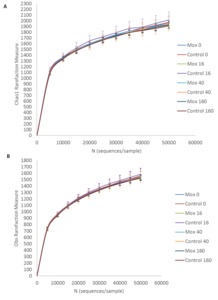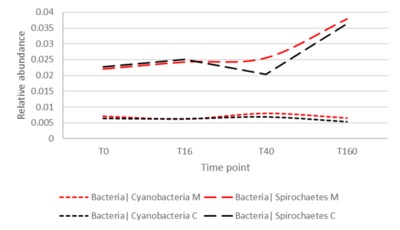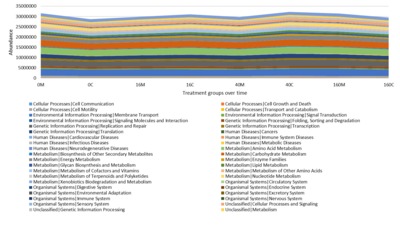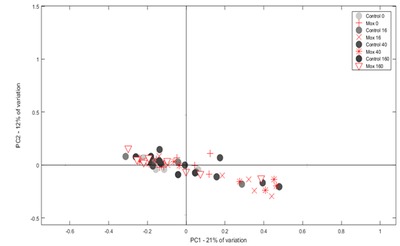Bugs and drugs: A systems biology approach to characterising the effect of moxidectin on the horse’s faecal microbiome
Daniels, Simon, Leng, J, Swann, J and Proudman, C (2020) Bugs and drugs: A systems biology approach to characterising the effect of moxidectin on the horse’s faecal microbiome. Animal Microbiome. ISSN 2524-4671
|
Text
Manuscript AM Final.docx - Accepted Version Available under License Creative Commons Attribution Non-commercial No Derivatives. Download (82kB) |
||
|
Image
Figure_1.tif - Supplemental Material Download (95kB) | Preview |
|
|
Image
Figure_2.tif - Supplemental Material Download (182kB) | Preview |
|
|
Image
Figure_3.tif - Supplemental Material Download (26kB) | Preview |
|
|
Image
FIgure_4.tif - Supplemental Material Download (114kB) | Preview |
|
|
Image
Figure_5.tif - Supplemental Material Download (111kB) | Preview |
|
|
Image
Figure_6.tif - Supplemental Material Download (227kB) | Preview |
|
![[img]](https://rau.repository.guildhe.ac.uk/16416/8.hassmallThumbnailVersion/Supplementary%201.png)
|
Image
Supplementary 1.png - Supplemental Material Download (136kB) | Preview |
|
![[img]](https://rau.repository.guildhe.ac.uk/16416/9.hassmallThumbnailVersion/Supplementary%202.png)
|
Image
Supplementary 2.png - Supplemental Material Download (33kB) | Preview |
|
![[img]](https://rau.repository.guildhe.ac.uk/16416/10.hassmallThumbnailVersion/Supplementary%203.png)
|
Image
Supplementary 3.png - Supplemental Material Download (269kB) | Preview |
|
![[img]](https://rau.repository.guildhe.ac.uk/16416/11.hassmallThumbnailVersion/Supplementary%204.png)
|
Image
Supplementary 4.png - Supplemental Material Download (109kB) | Preview |
|
![[img]](https://rau.repository.guildhe.ac.uk/16416/12.hassmallThumbnailVersion/Supplementary%205.png)
|
Image
Supplementary 5.png - Supplemental Material Download (24kB) | Preview |
Abstract
Background Anthelmintic treatment is a risk factor for intestinal disease in the horse, known as colic. However the mechanisms involved in the onset of disease post anthelmintic treatment are unknown. The interaction between anthelmintic drugs and the gut microbiota may be associated with this observed increase in risk of colic. Little is known about the interaction between gut microbiota and anthelmintics and how treatment may alter microbiome function. The objectives of this study were: To characterise (1) faecal microbiota, (2) feed fermentation kinetics in vitro and (3) metabolic profiles following moxidectin administration to horses with very low (0 epg) adult strongyle burdens. Hypothesis: Moxidectin will not alter (1) faecal microbiota, (2) feed fermentation in vitro, or, (3) host metabolome. Results Moxidectin increased the relative abundance of Deferribacter spp. and Spirochaetes spp. observed after 160 hours in moxidectin treated horses. Reduced in vitro fibre fermentation was observed 16 hours following moxidectin administration in vivo (P = 0.001), along with lower pH in the in vitro fermentations from the moxidectin treated group. Metabolic profiles from urine samples did not differ between the treatment groups. However metabolic profiles from in vitro fermentations differed between moxidectin and control groups 16 hours after treatment (R2 = 0.69, Q2Y = 0.48), and within the moxidectin group between 16 hours and 160 hours post moxidectin treatment (R2 = 0.79, Q2Y = 0.77). Metabolic profiles from in vitro fermentations and fermentation kinetics both indicated altered carbohydrate metabolism following in vivo treatment with moxidectin. Conclusions These data suggest that in horses with low parasite burdens moxidectin had a small but measurable effect on both the community structure and the function of the gut microbiome.
| Item Type: | Article |
|---|---|
| Keywords: | anthelmintics, cyathostomins, horses, microbiome, microbiota, metabolome, multi-‘omics, strongyles |
| Divisions: | Equine Management and Science |
| Depositing User: | Dr Simon Daniels |
| Date Deposited: | 13 Oct 2020 08:57 |
| Last Modified: | 19 Oct 2022 15:09 |
| URI: | https://rau.repository.guildhe.ac.uk/id/eprint/16416 |
Actions (login required)
 |
Edit Item |






